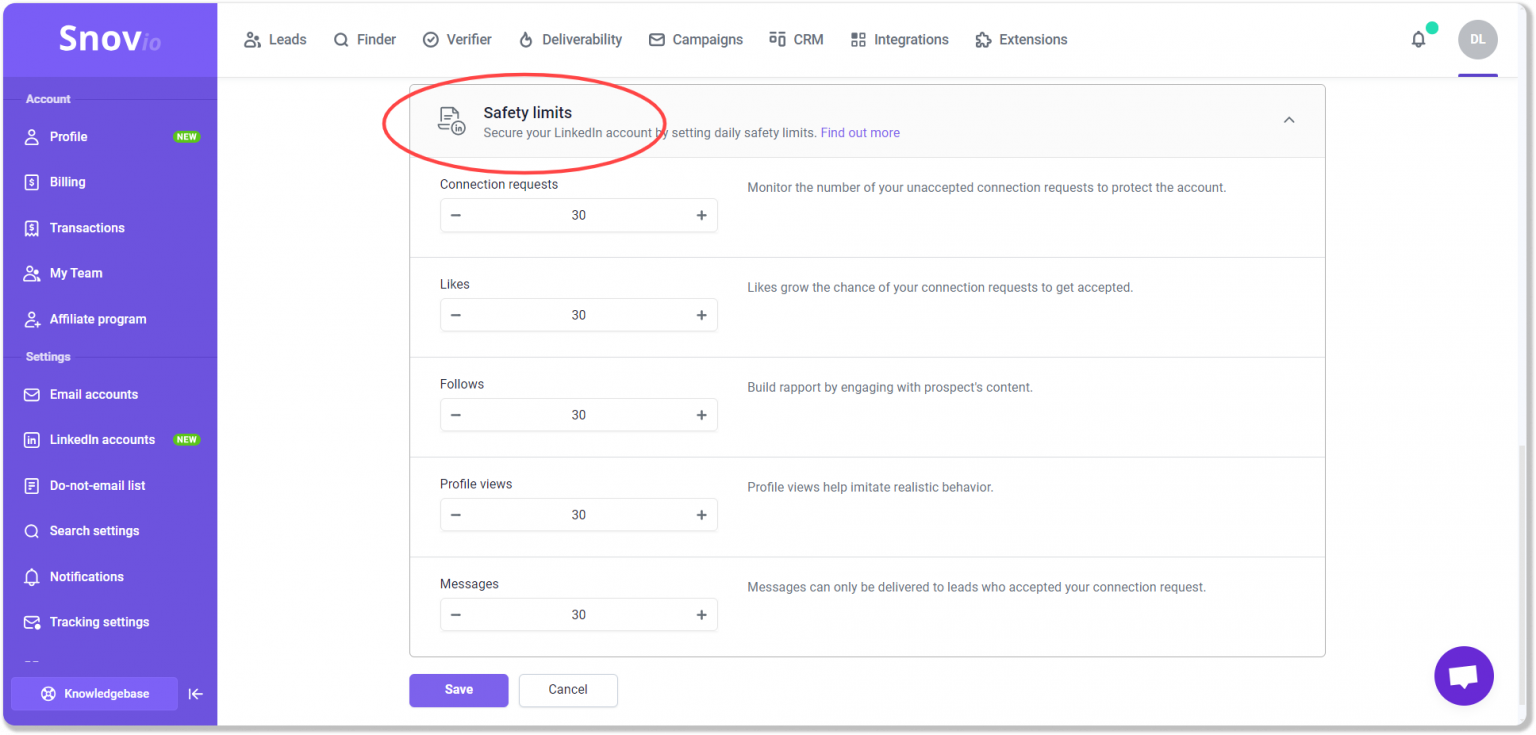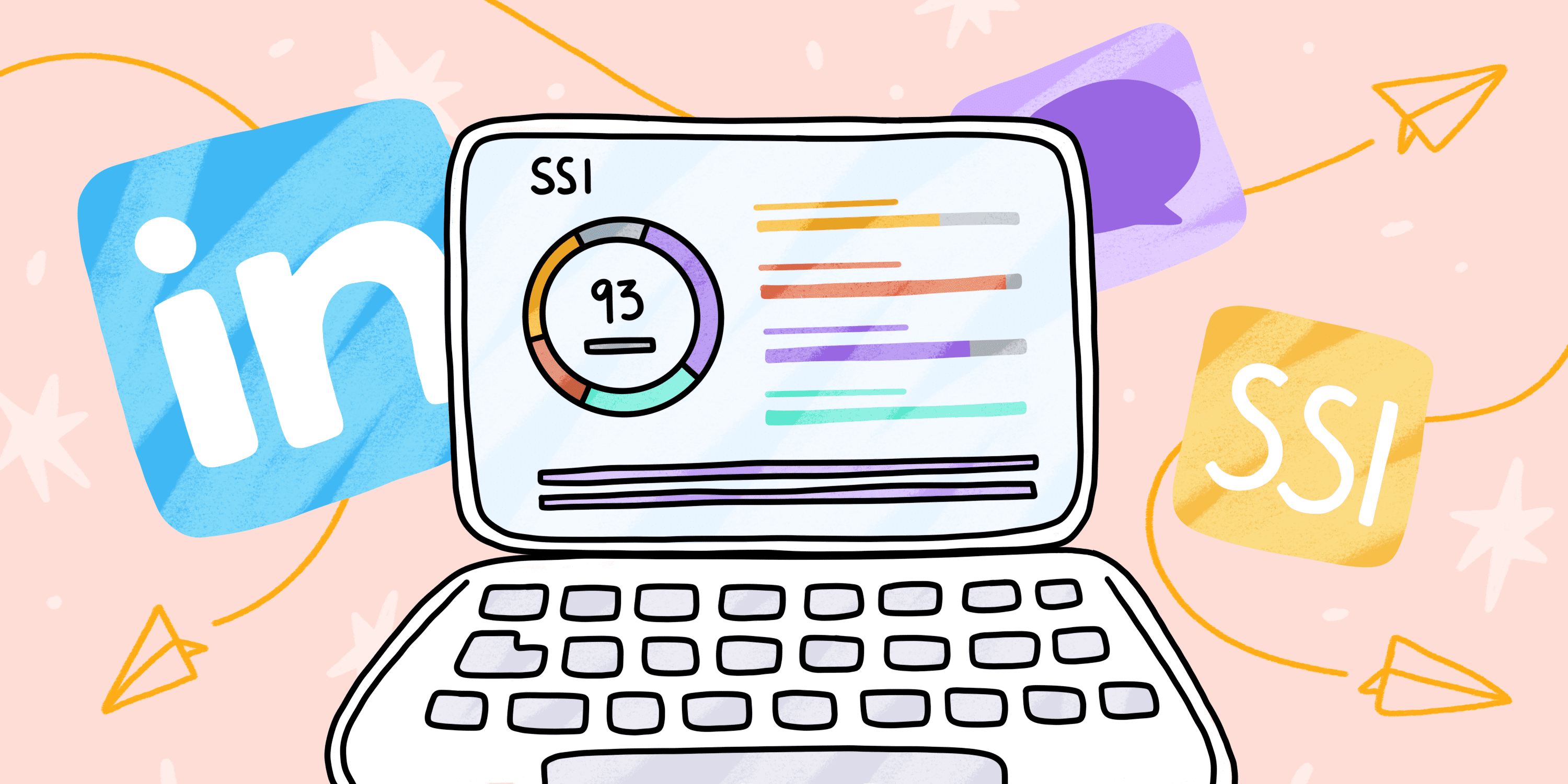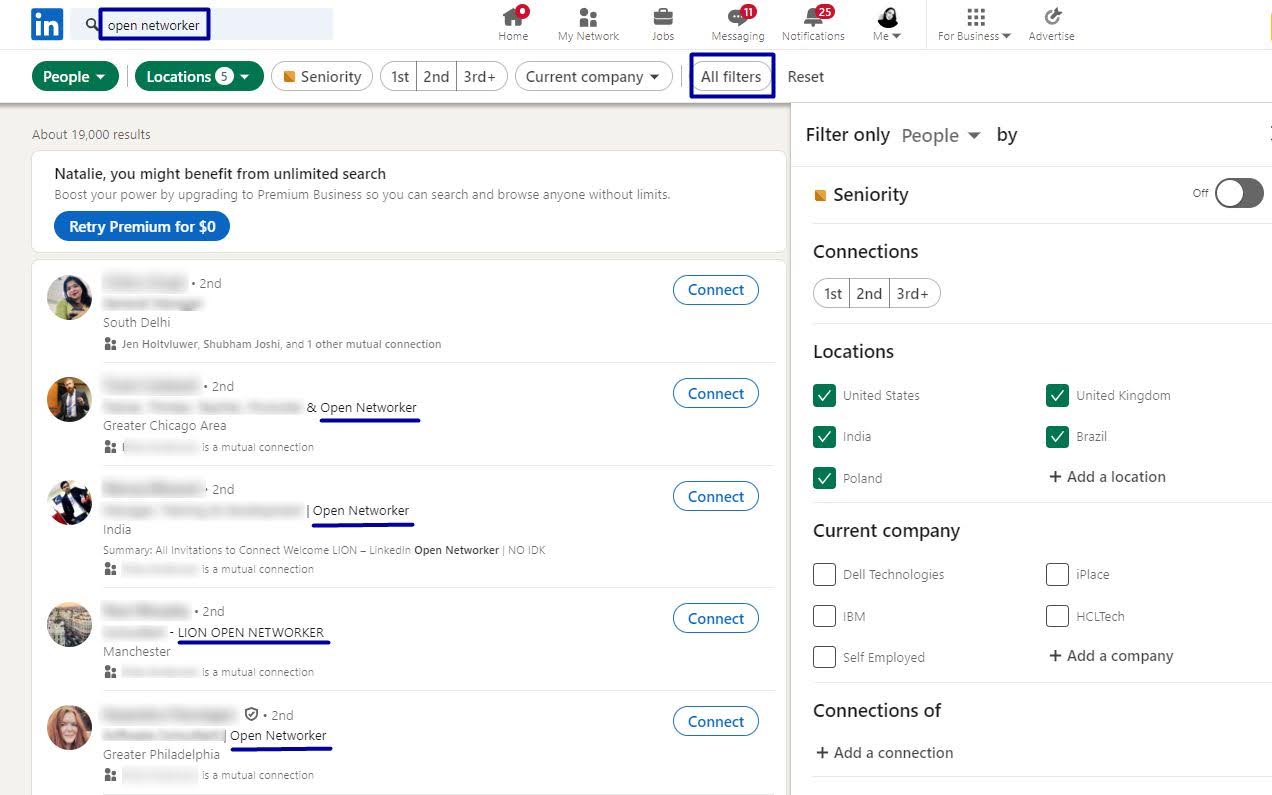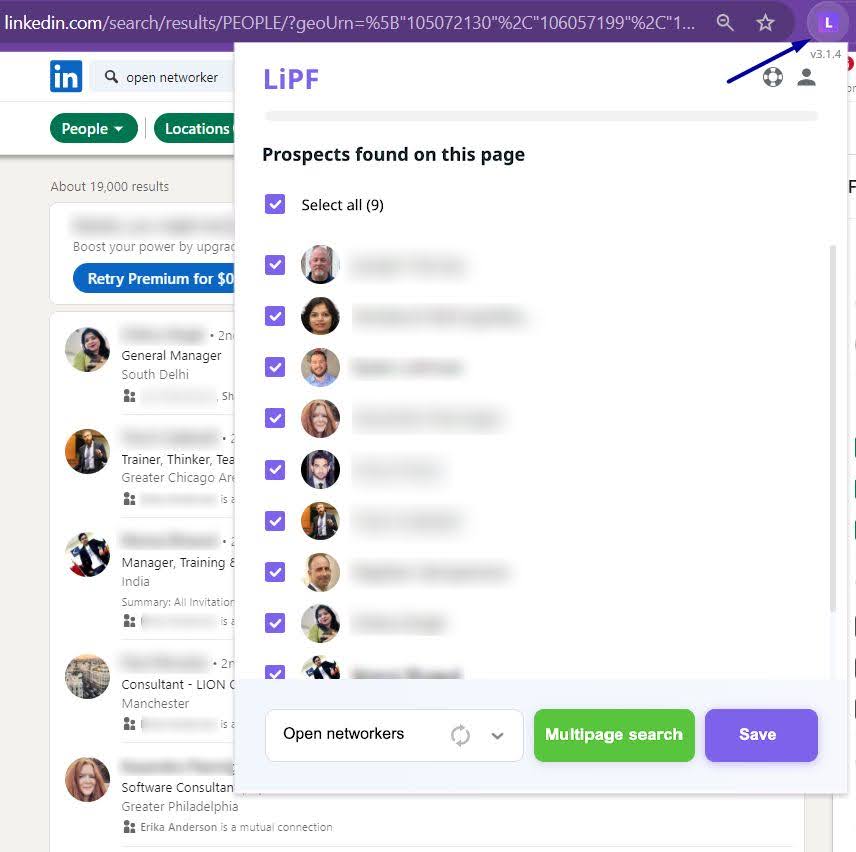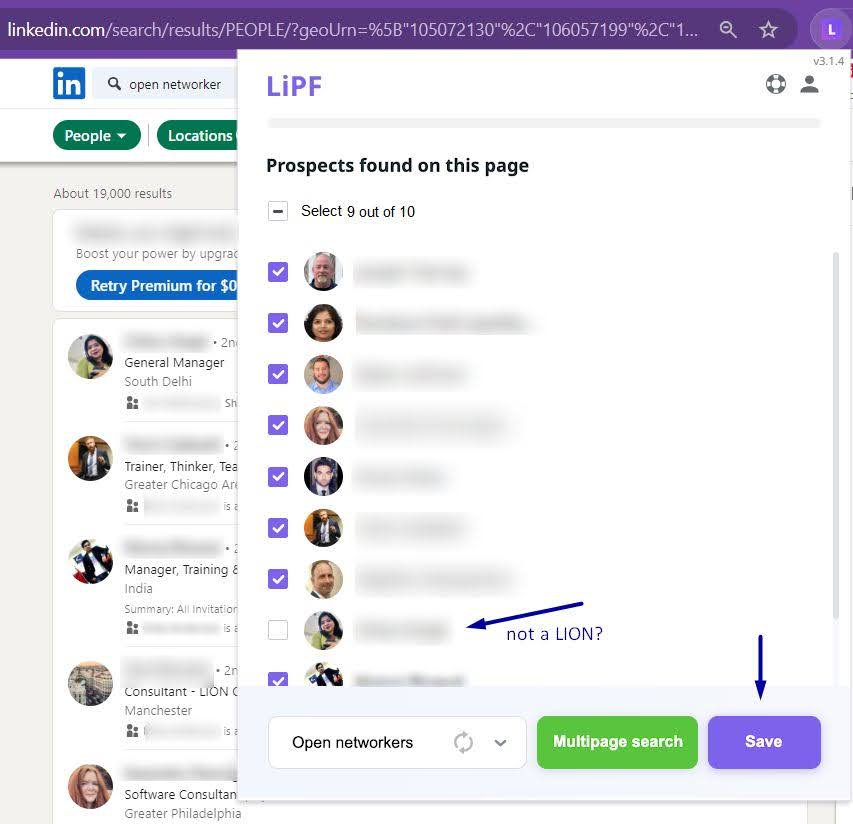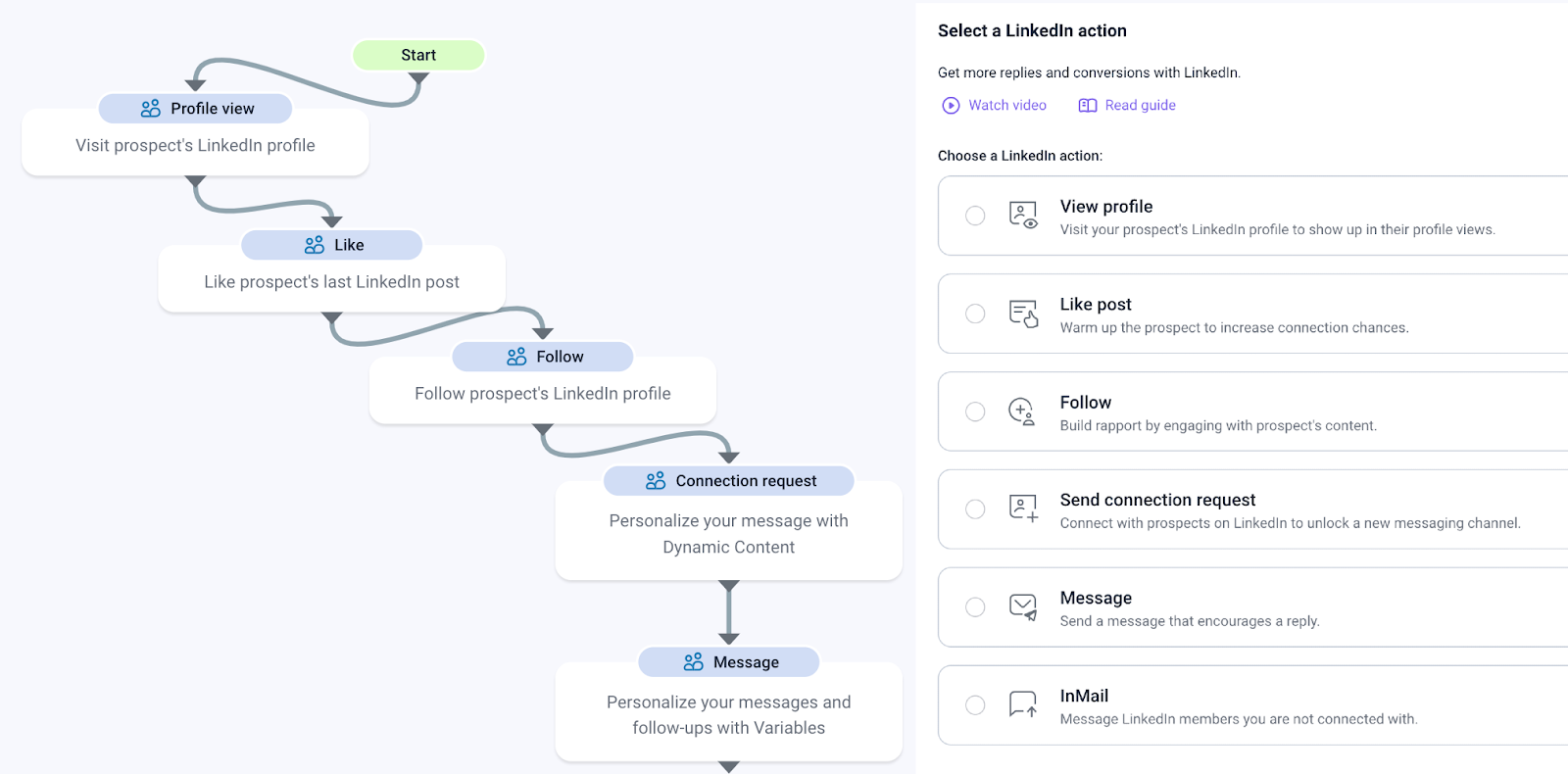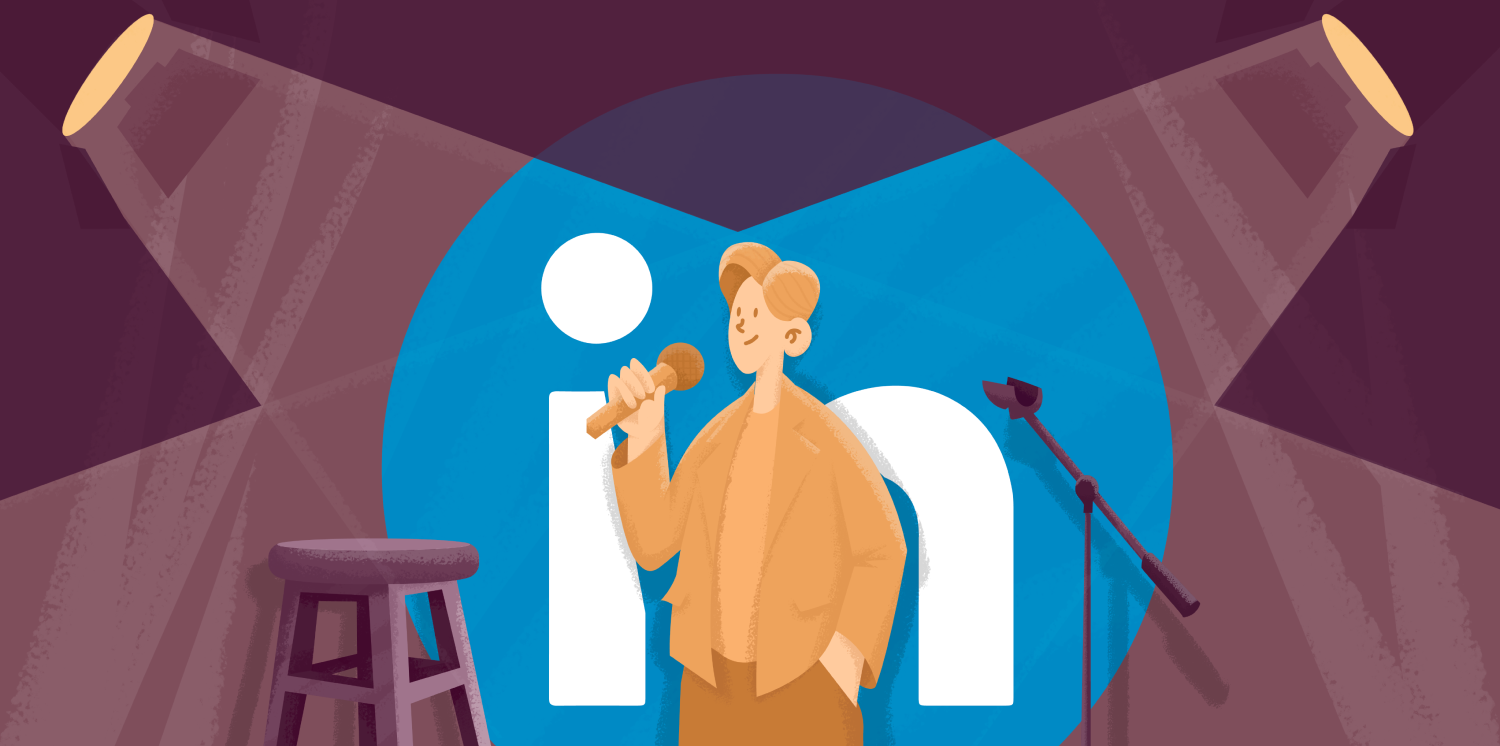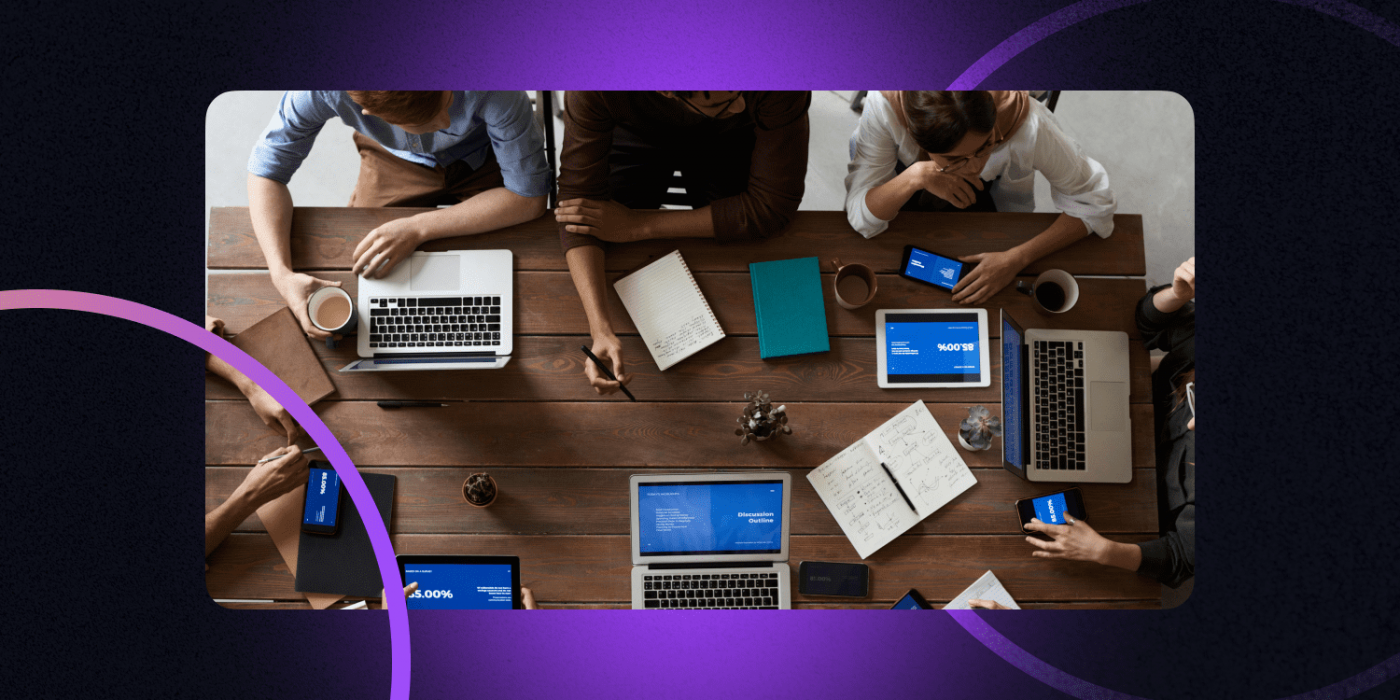You’ve probably encountered LinkedIn users who have the acronym LION somewhere on their profile. And what else do many of these users have? Thousands of connections!
Don’t you wish for a network this large? The lion’s share of leads are at your fingertips.
It turns out that the acronym LION, which actually stands for “LinkedIn open networker,” can influence your audience size. But what about increasing lead generation efforts? Is being a LION worthy of growing your lead database?
Keep reading to find out the answer.
Outline
- Who is a LinkedIn open networker (LION)?
- The benefits and pitfalls of open networking
- How to become a LinkedIn open networker
- How to find LIONs on LinkedIn
- The fastest way to grow a network of LIONs on LinkedIn
- How to successfully generate leads as a LION: a list of tips from Snov.io experts
- Alternative ways to generate leads on LinkedIn
- In conclusion: should you become a LinkedIn LION?
Who is a LinkedIn open networker (LION)?
A LinkedIn open networker (LION) is a person who is willing to connect with other LinkedIn users. LIONs will accept your connection request regardless of whether they actually know you or not. You don’t even have to be remotely relevant to their business or industry.
LinkedIn open networking is an effective audience expansion tactic. Once you become a LION, you can send a connection request to other networkers without the risk of rejection. That’s why it is particularly widely used by social sellers.
B2B social sellers employ a strategic approach to sales, leveraging social network platforms like LinkedIn. In particular, they use LinkedIn to identify, research, engage, and build relationships with prospective clients.
|
🎁 Did you know? Doing social selling on LinkedIn may increase your chance of reaching a quota by 51%. Download our free guide to become one of those social selling wizards on LinkedIn. |
The benefits and pitfalls of open networking
Before committing to the LION strategy, carefully consider the advantages and disadvantages of using this acronym in your profile.
The pros of being a LION
Once you become an open networker, your audience starts growing fast:
- the connection requests from other users will pour in,
- the activity on your page will likely skyrocket,
- you won’t have to worry about your connection requests being rejected or left hanging.
All of the above massively increases your profile’s visibility. Moreover, keep in mind that every LION in your audience is connected with people who aren’t open networkers themselves. Now, these users have also become easier to reach because you have mutual connections.
The cons of being a LION
The major downside to becoming a LinkedIn open networker is having less control over your audience. Yes, your network will grow fast, but will those new connections bring real value to your business?
After all, LinkedIn is full of fake profiles and users who might spam your inbox with irrelevant messages. Besides, it may shelter people who intentionally grow their network only to sell their profiles to others further. They won’t be interested in your content or business offer.
Another potential danger lies in the rapid growth of your network. That’s right: the greatest benefit of being a LION is also its weakness. The LinkedIn algorithm can view a sudden influx of connections, views, and interactions as suspicious activity.
|
❗️Remember: It’s important to gradually increase your activity on LinkedIn to avoid being flagged. Naturally, you can’t control how many connection requests, profile views, and messages you get from other users. But make sure to keep your own actions within LinkedIn limits. We at Snov.io take security very seriously. That’s why our LinkedIn automation software uses the location-based proxy and operates within daily limits that are based on your current SSI. The tool simulates human behavior by making natural delays between actions to keep your account safe from LinkedIn penalties. Even after you’ve warmed up your LinkedIn account, we recommend that you keep the number of pending connection requests under the latest 500. All others should be removed. You don’t need to monitor and delete them manually — it may be really tough. Snov.io LinkedIn Automation Tool will automatically clean up the list of your pending requests. |
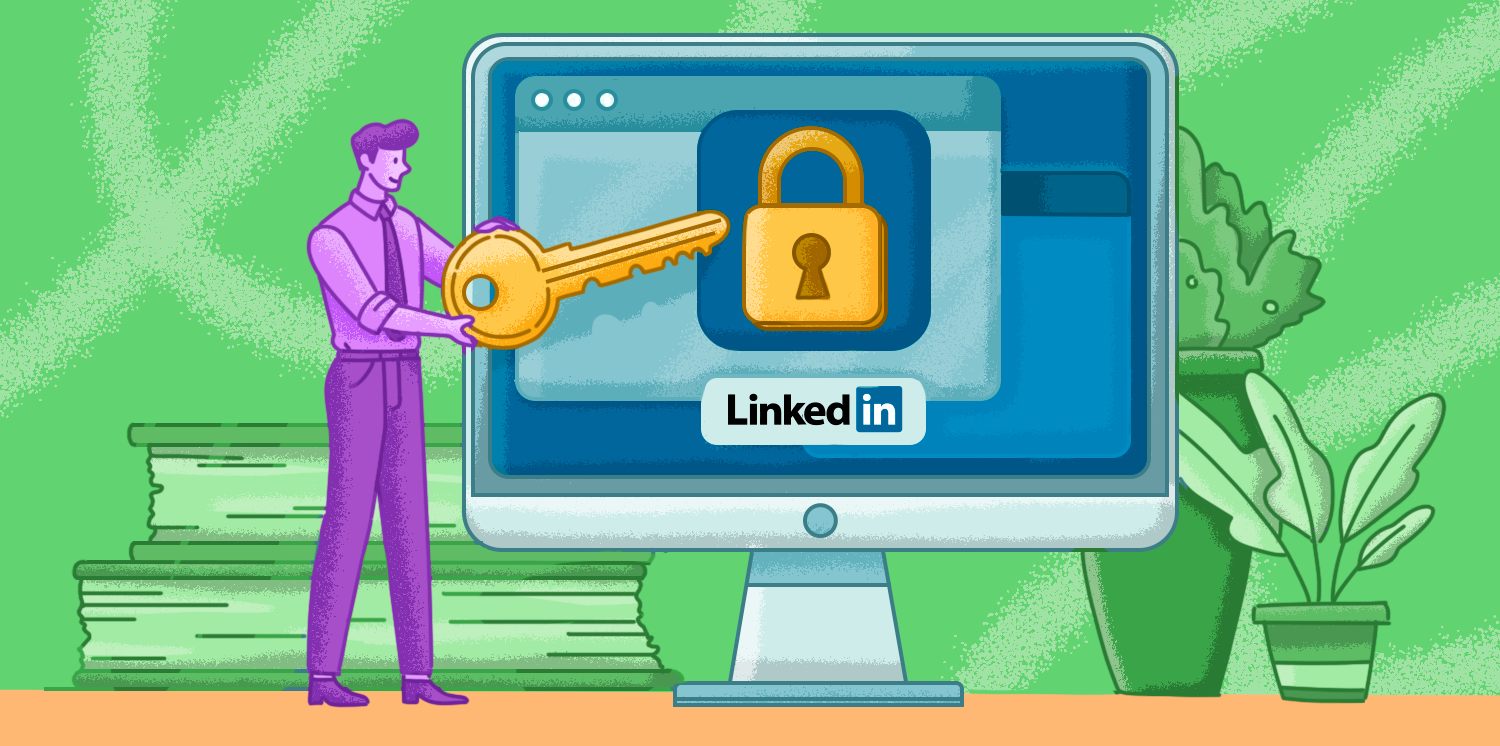
LinkedIn Account Restricted: Why And How To Get It Back?
September 24 2025
How to become a LinkedIn open networker
Let’s say the pros outweigh the cons for you, so you decide to become a LION. Where do you start?
It’s super easy because LION is not some official status given by LinkedIn. Just add the acronym “LION” to the basic profile information. Some users prefer to include it in their LinkedIn headline:
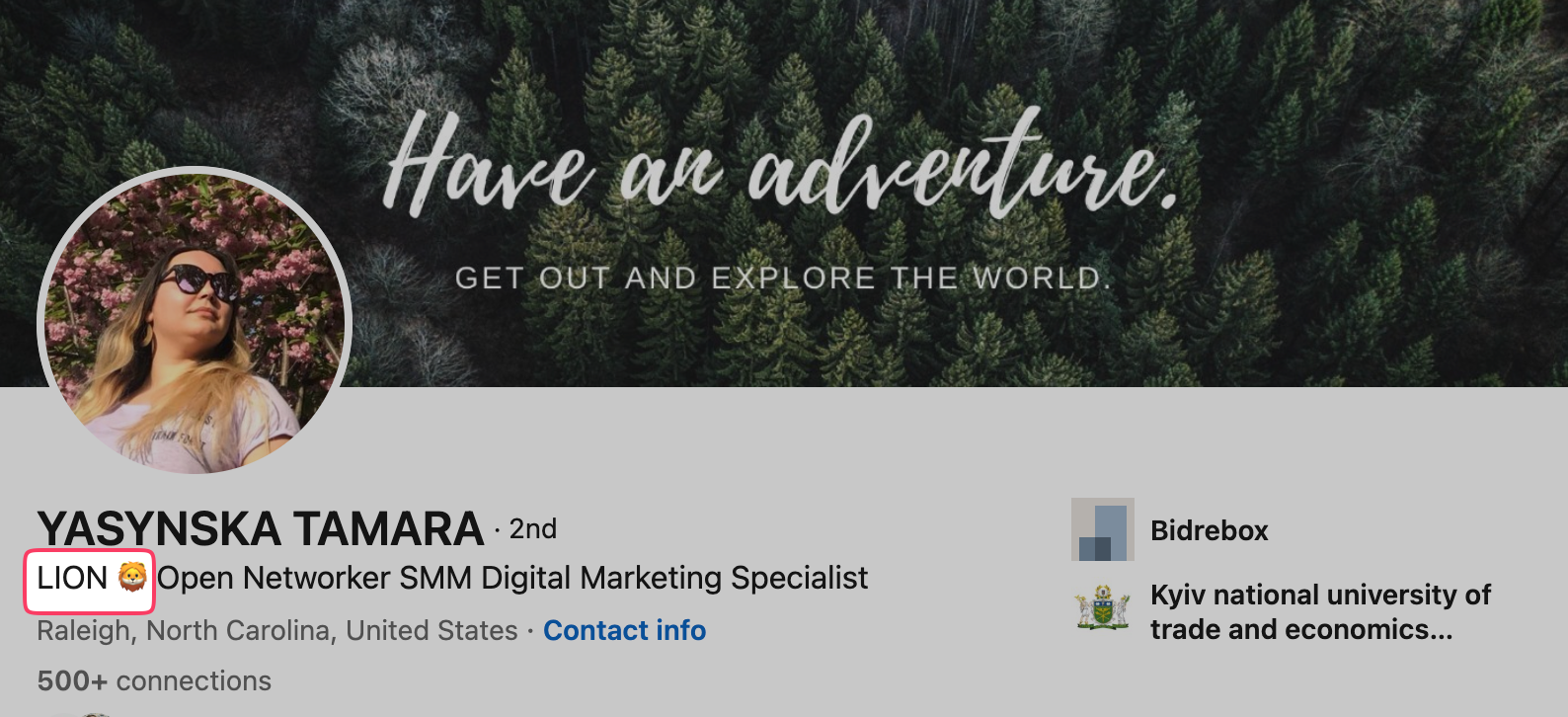
Others place it in the “About” section:

There are also profiles displaying “LION” after the user’s last name:
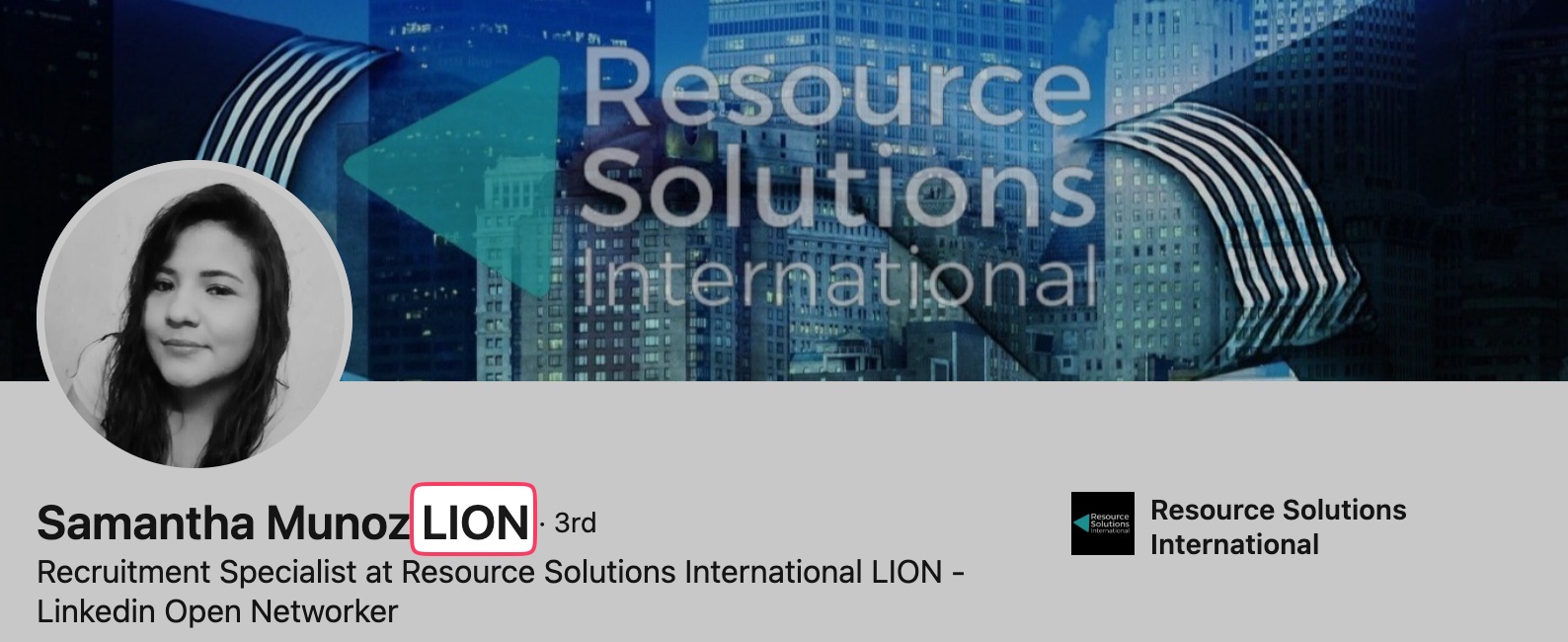
Any of the above acronym placements will make your profile appear in the search when someone is looking for LIONs. So, where you decide to put it depends solely on your approach to profile optimization.
|
💡Expert tip: Profile optimization is essential to your social selling success. Learn how to do it properly by watching the video: |
How to find LIONs on LinkedIn
You’ve let the world know that you are accepting connection requests. Great! But it’s not a good idea to just wait for new followers to come to you. Start looking for other LIONs to speed up your network growth.
You can just input “LION” into the search bar and filter the results by people:
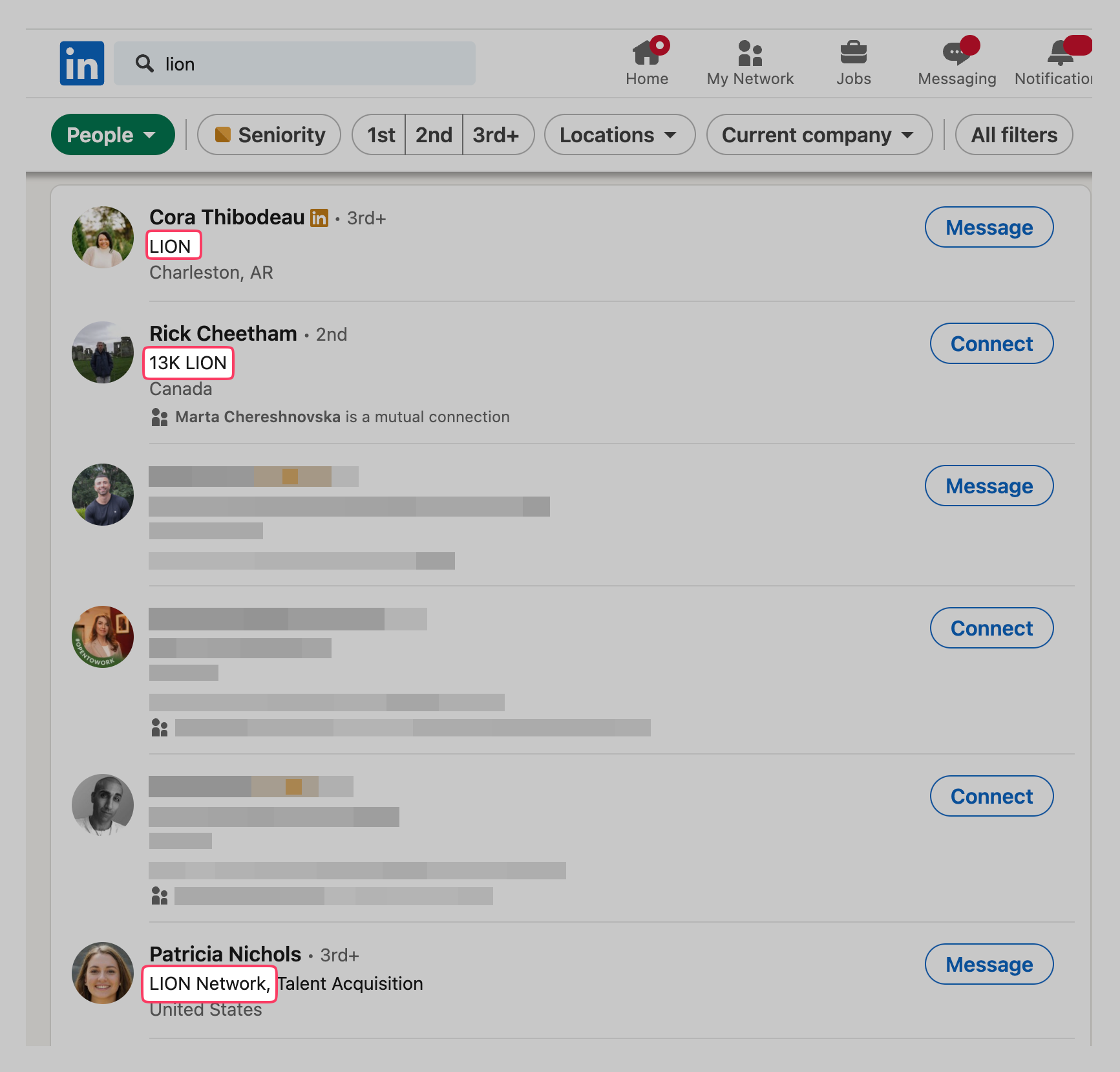
For a more precise search, add the name of the relevant niche or seniority level. For example, if you want to connect with B2B company representatives – put “B2B LION” in the search bar.
This tactic is easy and straightforward. Yet, as you can see in the example above, it doesn’t yield the best results — only 3 out of 5 results are open networkers.
Note that some users write “LinkedIn Open Networker” or just “Open Networker” instead of “LION.” Searching for these terms will bring you better results:
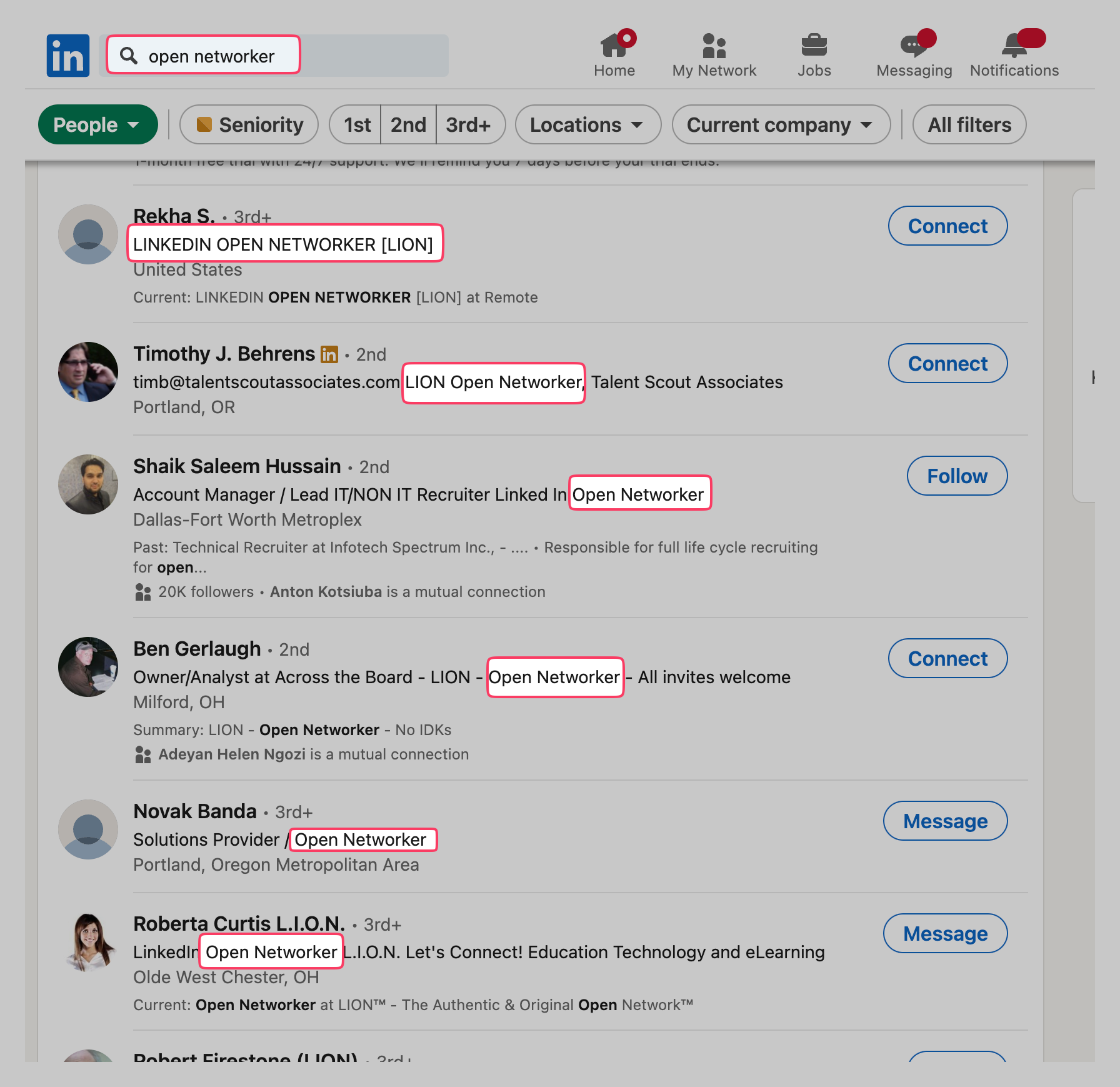
You can also join the group of LinkedIn open networkers. We recommend choosing the one that claims to filter its list of members. This increases the chances of encountering authentic profiles there.
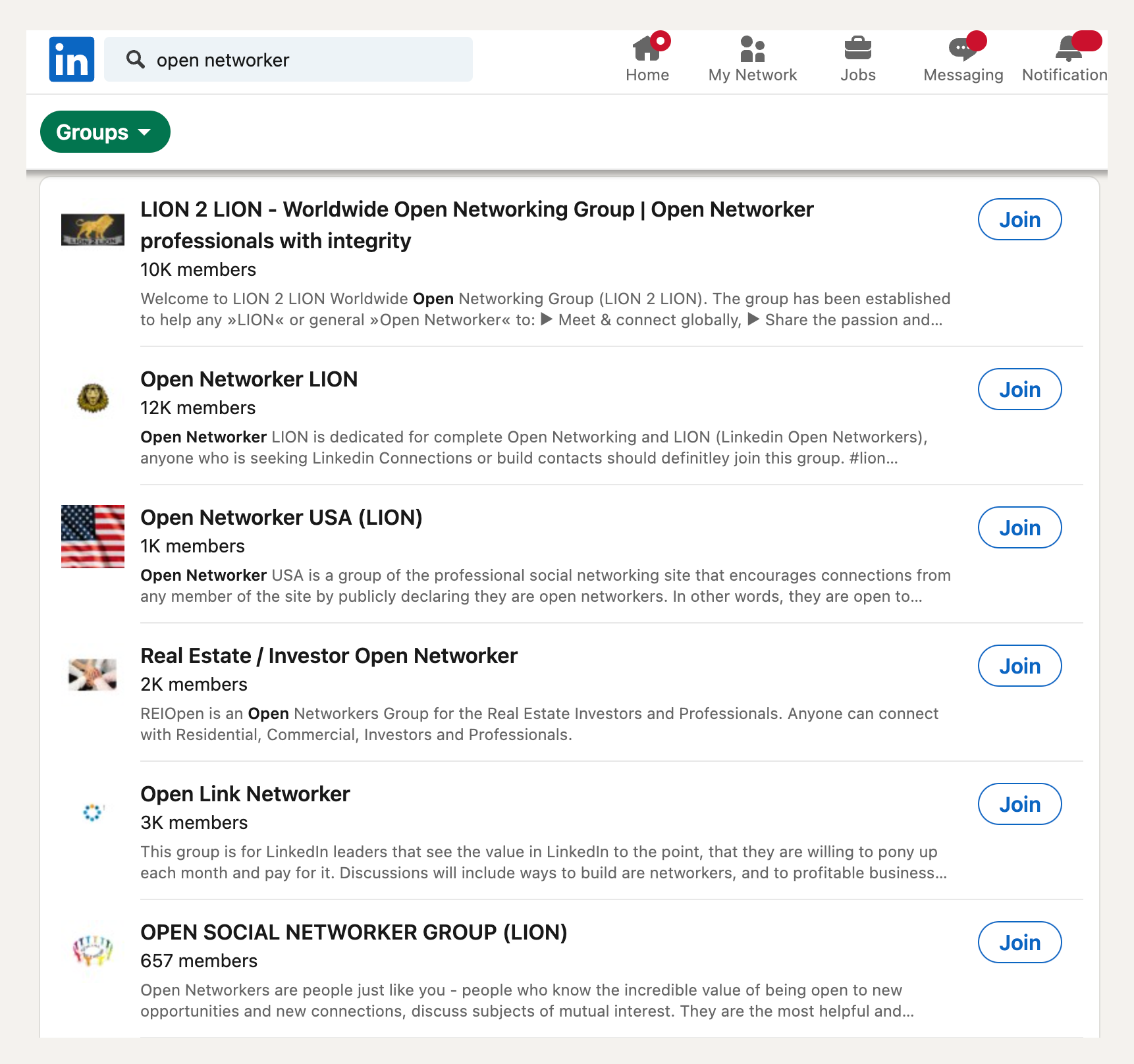
You can use LinkedIn Sales Navigator to segment the search results better. With its help, you’ll successfully find and reach out to more relevant LIONs within the extensive network.
The fastest way to grow a network of LIONs on LinkedIn
You don’t have to become a LION yourself to take advantage of this approach. With a reliable automation tool like Snov.io, engaging with LinkedIn LIONs can be at a race speed. Here’s how you can do it in bulk:
1. Install Snov.io LI Email Finder (you can use it for free)
2. Go to the LinkedIn search, enter ‘open networker,’ and filter the search results:
3. Click on the LI Prospect Finder icon to generate the results:
4. Choose only those prospects from the list who have marked themselves as open networkers and save them to your Snov.io list.
Or you can use Snov.io’s app feature, LinkedIn Search, to transfer all found LION contacts from a LinkedIn search page directly to your Snov.io account. Just connect your LinkedIn page to Snov.io, run a search on LinkedIn, copy the search URL, and paste it into Snov.io.
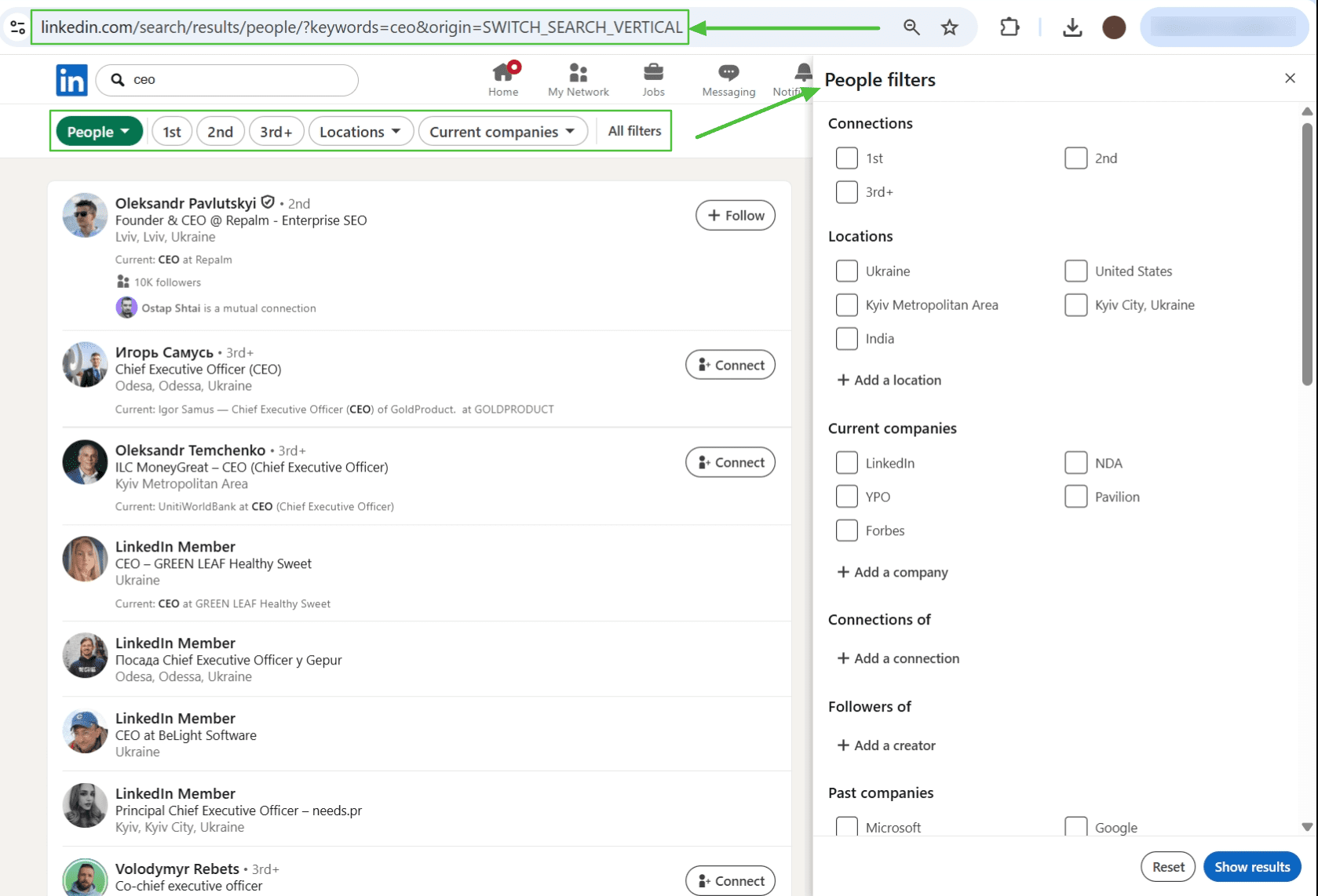
The tool automatically extracts data and performs email search and verification.
5. Now, you can engage with them automatically.
Snov.io allows you to attract LIONs’ attention with automated profile views, follows, and post likes. Plus, you can program personalized connection requests, messages, and even InMails to be sent on autopilot. Thanks to the Snov.io’s cloud-based operation, you may keep up your LinkedIn activity even when you’re offline:
How to successfully generate leads as a LION: a list of tips from Snov.io experts
With or without automation, getting leads as a LinkedIn open networker requires a well-thought strategy. Our experts compiled a list of best practices you can start using already today:
- Vet your connections
- Don’t display sensitive information
- Offer valuable content to your network
- Personalize your messages
- Monitor your LinkedIn sales performance to adjust the strategy
1. Vet your connections
There’s no rule that says, ‘Hey, dude, if you’re an open networker, you have to accept all of the requests.’ On the other hand, now, if you constantly refuse to connect with fellow LIONs, your reputation may take a hit.
Instead, you can clean up the list of your connections after accepting them. This way, you’ll be able to get rid of connections that:
- don’t look authentic,
- are from an irrelevant industry, and
- neither engage with you nor your content.
Quietly…
2. Don’t display sensitive information
Accepting tons of requests puts you at risk of being a target of cybercriminals. We recommend removing details like your phone number and address from your profile. To be on the safe side, also avoid posting private pictures (e.g., of yours, your friends, or family).
As for your email, keep in mind that it will be accessible to your network of connections by default. Yes, you can change the settings to make it private:
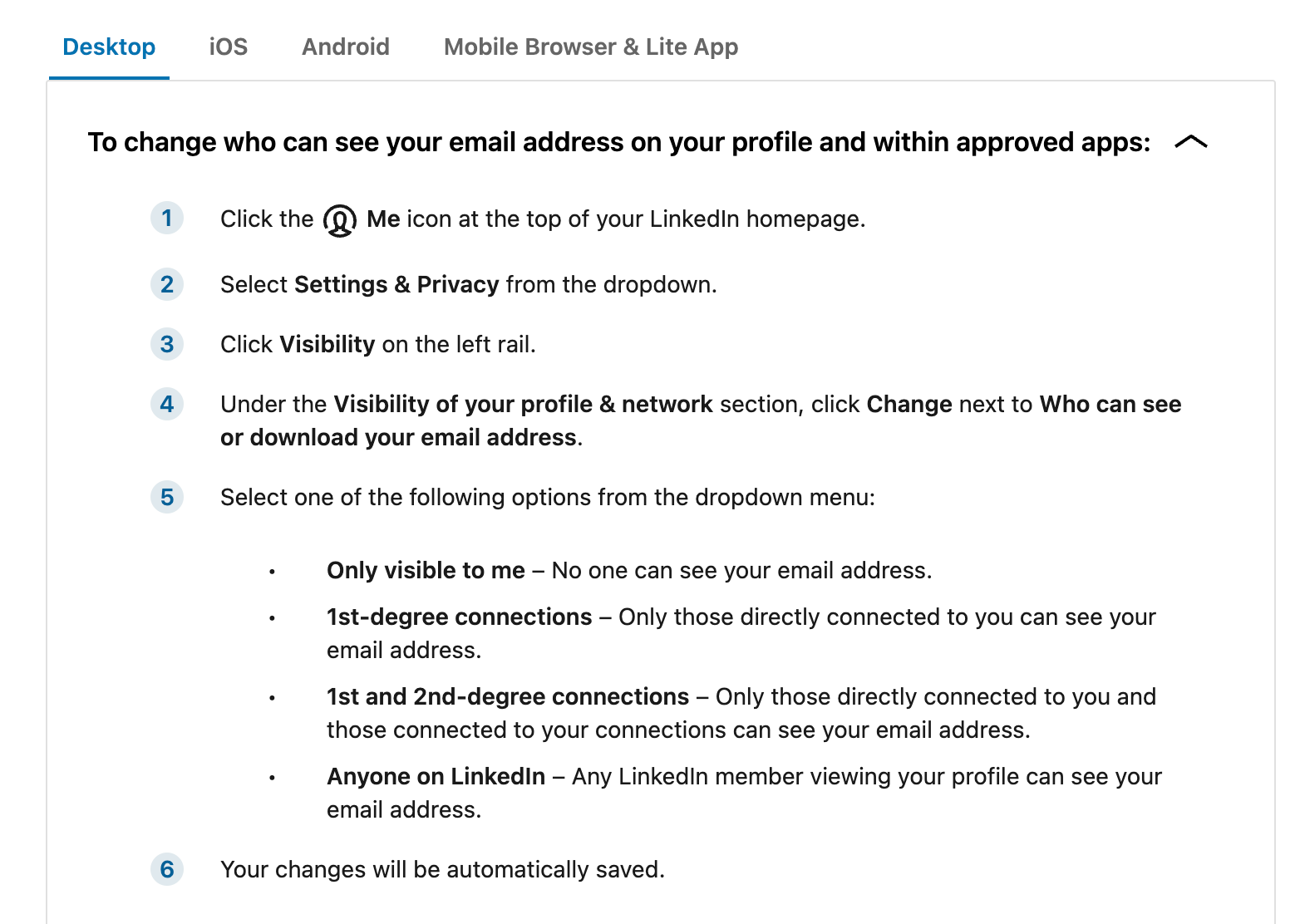
But what if you want some 1st-degree connections to see your email anyway? That’ll be the problem. So, in this case, get back to our previous tip — be selective while adding new connections. Moreover, clean out the inbox regularly to reduce the number of spam messages.
3. Offer valuable content to your network
Other LIONs may disconnect with you if you pose no value to them. It’s not enough to garner a large following — you have to make these users stay and engage with you. An effective way to achieve this is by using content marketing.
Show off your expertise by posting high-quality content relevant to your network. Build relationships by commenting on other LIONs’ posts and joining conversations in groups. Give (solicited) advice when you see a fellow LION struggling with some aspect of their business.
4. Personalize your messages
It doesn’t matter if your recipient is an open networker or not. Everyone wants to feel seen and valued. Therefore, don’t forget to personalize your messages when engaging with leads, even if they have a LION acronym in their profile information.
In order to appeal to your prospects, research everything you can about their business. Know their pain points and desires. Offer relevant solutions to help them overcome their challenges. Explain how your product can bring your prospects closer to their goals.
5. Monitor your LinkedIn sales performance to adjust the strategy
Being a LinkedIn open networker doesn’t work equally well for all users at all times. It can be priceless when you’re growing your network or warming up your profile. Yet, it can become more of a nuisance when you already have a large following and need to start narrowing down your list of prospects.
Continuously analyze your LinkedIn activity results to identify whether being a LION is still working in your favor. Track the number of accepted connection requests, answered messages, scheduled calls, closed deals, and so on. Compare it to the resources you spend vetting your connections, cleaning out spam, and looking for relevant leads.
Based on this analysis, determine how to optimize your social media strategy. One day, you may discover that the LION approach is not working anymore, and that’s okay. Remember, any social selling tactic is only valuable if it yields a positive ROI.
Alternative ways to generate leads on LinkedIn
Let’s say the downsides of the LION approach outweigh the merits for you. Does it mean you’ll lose a chance to reach your social sales quota?
Absolutely not!
While being an open networker indeed boosts your LinkedIn growth, there are other tactics to reach prospects on this platform. Before we get into them, note that organic LinkedIn growth remains a cornerstone of any social selling strategy.
1. LinkedIn ads
Some companies avoid using LinkedIn ads due to their limited budgets. Others disregard them because ads can only be posted from a business page. But think twice before casting this marketing tactic aside because ads hold great potential!
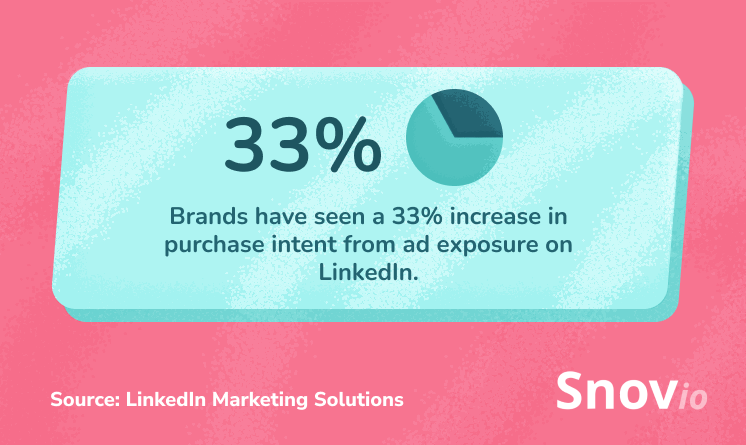
With ads, you can present your products and services to people that are beyond your network. Moreover, though being a business-only feature, ads can still help to increase your personal profile’s visibility. For instance, you can draw attention to your personal account by advertising pieces of your original content.
-
Send InMails
You don’t need to connect with every lead you find on LinkedIn to reach them. LinkedIn offers a premium feature called InMail. It allows you to directly message users who are outside of your network.
Depending on your subscription plan, you’ll get a different number of InMails to send every month. Because the quantity of InMails is strictly limited, you have to use this feature very strategically.
1. Add email marketing to your strategy
Don’t give up if you feel like your social media network is not growing at the desired rate! Supplement your strategy with good old email marketing. Emails are still the preferred way of communication for many B2B professionals, so you can’t go wrong here.
2. Become a member of multiple LinkedIn Groups
Don’t focus on LION-centered communities. Participating in groups that align with your professional goals can be much more useful for your strategic LinkedIn growth.
The more Groups you join, the more users with similar interests and experiences you’ll meet. Engage with their content to show that you have lots in common before connecting with them. Then, write personalized connection requests. This will increase the chances your request will be accepted.
3. Search for relevant LIONs anyway
Identify LION profiles that match your ideal customer profile and start connecting with them. There’s a high chance of them accepting your request even if you’re not an open networker. This will enable you to quickly expand your network and establish valuable professional relationships without receiving irrelevant requests.
In conclusion: should you become a LinkedIn LION?
Now that we’ve explored every aspect of being a LION, you can see there’s no single answer to this question. In the end, everything depends on your goals.
Is your primary goal to expand your LinkedIn network and establish yourself as a thought leader fast? Then, being a LinkedIn open networker looks like a great idea. Do you prioritize building a strictly filtered network of perfect clients and engaged followers? Well, in such a scenario, I’d recommend you choose another approach.
Regardless of the strategy you choose, with Snov.io tools, you’ll boost your lead generation efforts significantly. And if you’re still unsure how to sell your products and services on LinkedIn successfully, it’s okay. Join a free Snov.io Academy course and learn more.


